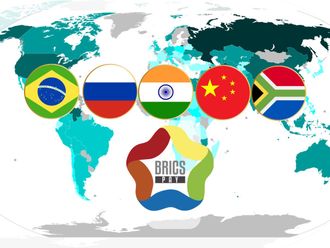There is a certain irony in that India's present Prime Minister, Dr Manmohan Singh, who ushered in India's new economy with de jure liberalisation of complex import-export regulations now struggles with the most basic of economic phenomenon: inflation.
The reasons are varied, naturally, but that is of little consolation to Indian consumers. Worse yet, the welfare impact on inflation is seemingly impact on the ruling coalition except in terms of possible electoral losses.
Notwithstanding the convenient amorality of such a calculus, it points to the staggering level of dissonance between different governmental agencies that govern food and agricultural distribution on one hand and those that govern monetary policy setting in explicit and implicit way.
To wit, the old nemesis of Prime Minister Singh — the old India economy — has returned to upset the market-centric policies of the present coalition.
Arbitrariness
The "old India" is one marked by extremes of arbitrariness in pricing by food monopolies, an outdated public distribution system that is ill-equipped to deal with supply shocks, regulatory agencies that can at best "raid" hoarders but do little else to affect market prices, and worst of all a petroleum pricing policy that feeds inflationary expectations.
Among keen watchers of India's economic policy there is dissension on the causes.
Those who watch the monetary side of the economy more keenly argue that the money supply is at fault. Professor Ajay Shah, a oft key member of various financial commissions, argues that the Reserve Bank of India is at fault. This has been caused by repeated RBI's partial sterilisation by buying the dollars since 2003.
The impact of this sterilisation effort is that more rupees enter the system and thus help keep the rupee-dollar exchange unnaturally low (and implicitly promotes export growth).
The RBI compounded the problem by actively arguing that "inflation is not a problem" as they pushed the accelerator on the money supply in the post credit crises. Simply, more money in the system resulted in fast growing changes in price levels.
For others, those who watch the actual food distribution scheme and the welfare impact of food inflation (which rose to 18.32 per cent for the week ending last December 25), policy incoherence has compounded the issue.
Poverty line
The National Advisory Council, chaired by Sonia Gandhi (the leader of Singh's Congress Party), has advocated that even those above the official poverty line be provided statutory food provisions. As The Hindu reports, this would translate to nearly 90 per cent of rural areas and 50 per cent of urban areas.
In contrast, the Rangarajan Committee report has endorsed a more conservative approach where statutory release of food products ought to be given solely to those below the poverty line and indexed to inflation.
After much hand wringing, the government has come out with a recommendation to set up (yet another) regulatory body that would oversee complaints that may arise in the distribution process. What the final stance of the government will be is less than clear on various subtleties.
Wait-and-watch policy
As a result, many major producers/wholesalers have adopted a wait-and-watch policy. Of course, in its typical ham-handedness, the government has raided "hoarders".
Opportunistic behaviour is the cornerstone of market efficiency. Vagueness in policy has furthered the resultant crises.
On the Left, powerful critiques have emerged on the whole nature of India's uneven economic growth.
As many have argued, despite good monsoons, India's agriculture was suffering and small producers (vital cogs in the supply-chain machinery) have been suffering (and manifestly ignored by Right-centric governments). So, it was a matter of time before such disequilibrium revealed itself.
The columnist works for a major European investment bank in New York City. All opinions are personal and don't reflect any institutional perspectives.












